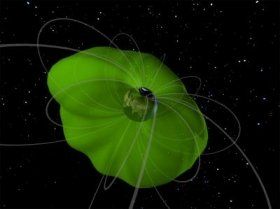On Jan. 20, 2018, amateur astronomer Scott Tilley detected an unexpected signal coming from what he later postulated was NASA’s long-lost IMAGE satellite, which had not been in contact since 2005. On Jan. 30, NASA — along with help from a community of IMAGE scientists and engineers — confirmed that the signal was indeed from the IMAGE spacecraft. Whatever the next steps for IMAGE may be, the mission’s nearly six years in operation provided robust research about the space around Earth that continue to guide science to this day.
On March 25, 2000, NASA launched the Imager for Magnetopause-to-Aurora Global Exploration, or IMAGE, mission. It was the first mission to use neutral atom, photon and radio imaging techniques to produce large-scale, simultaneous measurements of the charged particles that exist in near-Earth space — namely in our magnetosphere, the magnetic fields that surround our planet, and its inner bubble of cold material called the plasmasphere.
“IMAGE was a discovery machine and a seminal mission that gave us a broader perspective on Earth’s environment and its ever-changing magnetosphere,” said Jim Green, director of planetary science at NASA Headquarters in Washington, who worked as a co-investigator and deputy project scientist for IMAGE. “Much of my career as a magnetospheric physicist was with IMAGE, and the science was transformative.”
Originally designed as a two-year mission, IMAGE was approved twice to continue its operations. But when the spacecraft unexpectedly failed to make contact on a routine pass on Dec.18, 2005, its promising tenure seemed to be cut short.
Read more at NASA/Goddard Space Flight Center
Image: An oblique view of the plasmasphere, reconstructed from IMAGE data. (Credit: NASA's Goddard Space Flight Center Scientific Visualization Studio/Tom Bridgman, lead animator)




